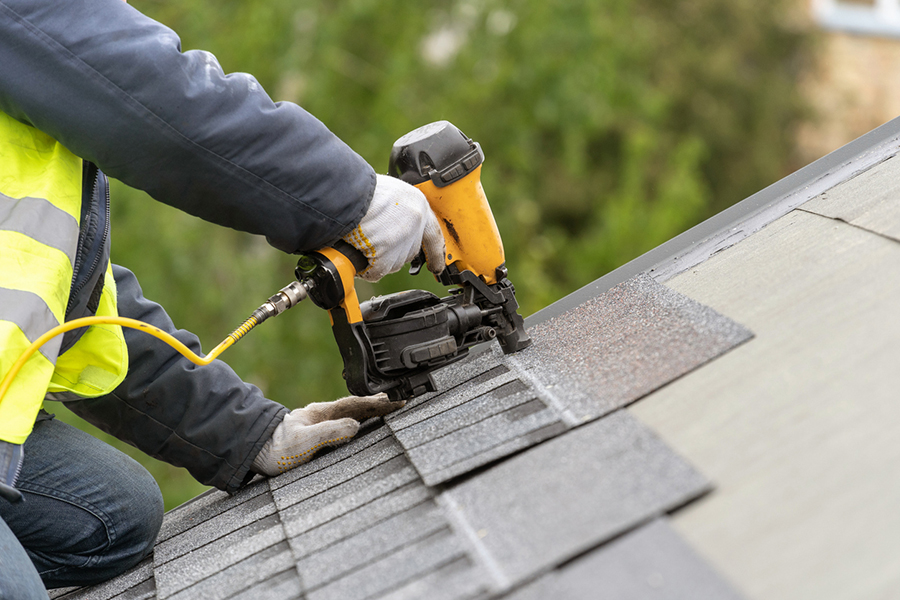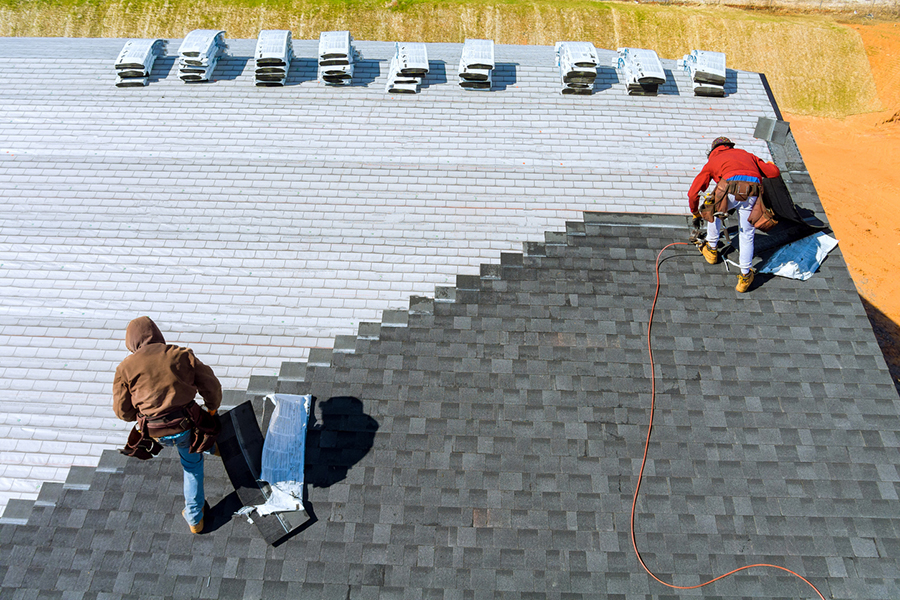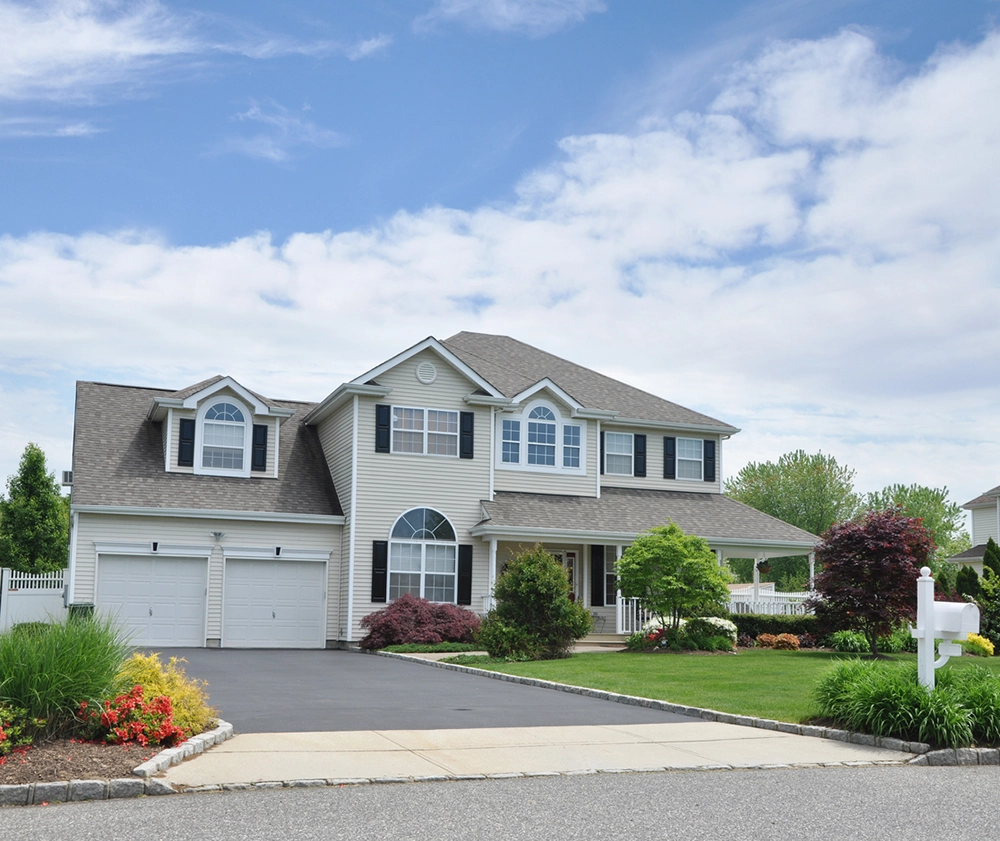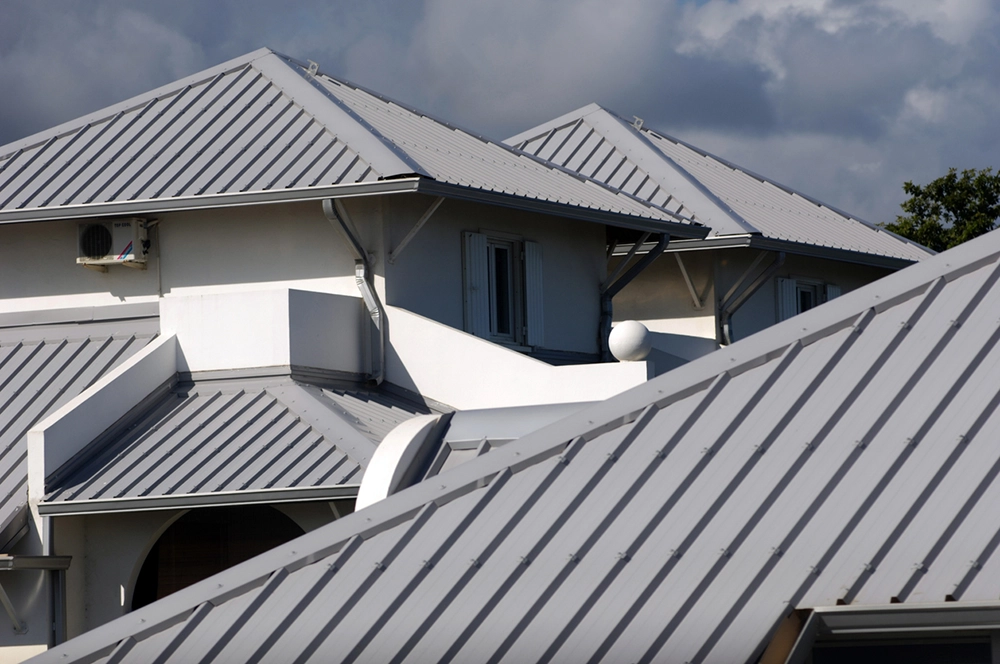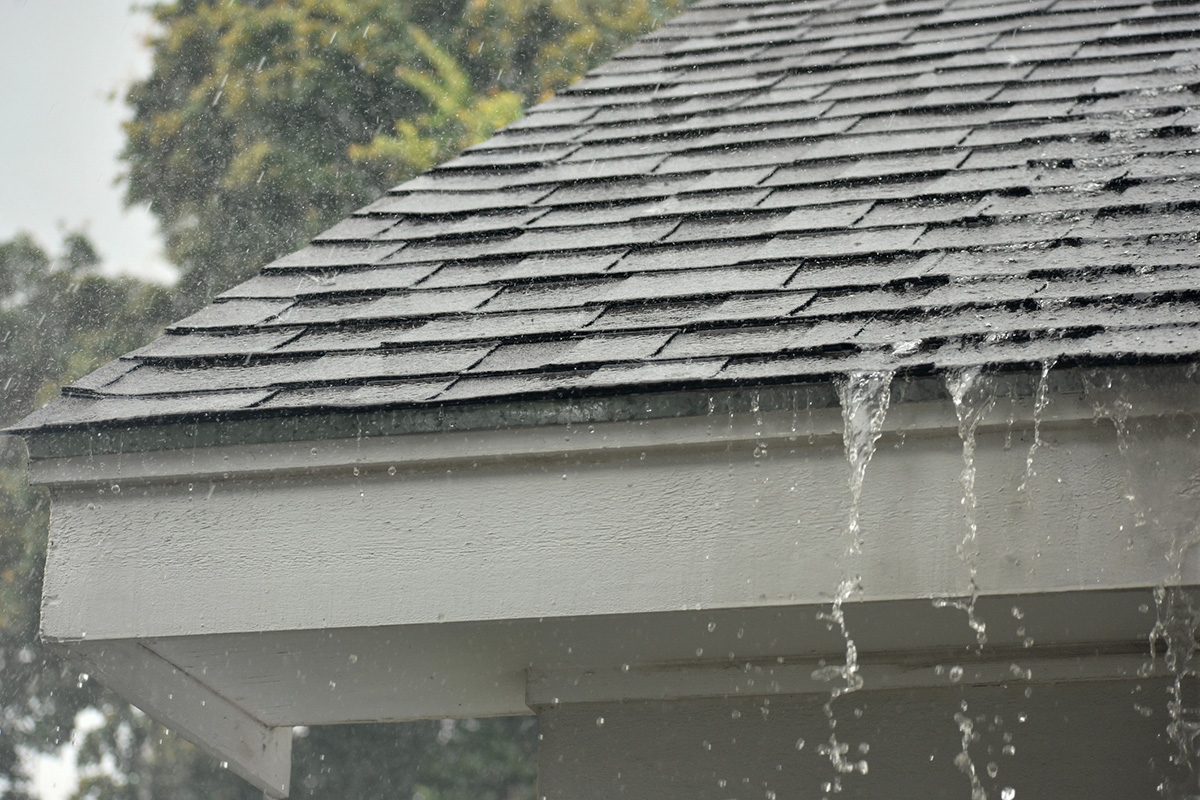Roofing Blog
Free tips & advice for homeowners
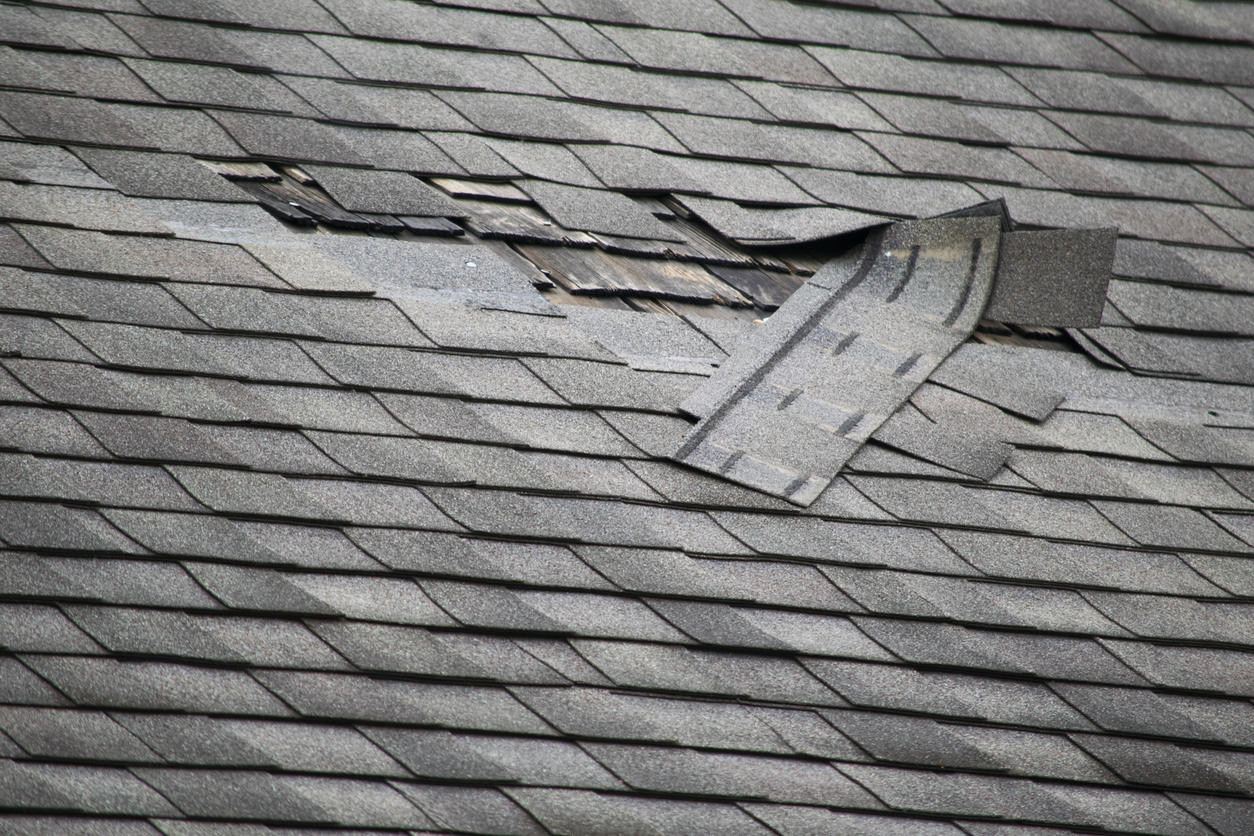
The Connection Between Wind Damage and Roof Leaks
When a storm rolls through, many homeowners worry about the immediate aftermath—downed trees, power outages, and flooding. However, one of the most insidious forms of damage that often goes unnoticed until it’s too late is wind damage to your roof. Understanding how wind can lead to roof leaks is essential for protecting your home.
The Basics of Wind Damage on Roofs
Wind damage can wreak havoc on a roof, especially during strong storms or hurricanes. While the damage might not be immediately visible, even minor issues can lead to significant problems over time.
What Causes Wind Damage?
Wind damage occurs when high winds create uplift forces that can displace roofing materials or when wind-driven debris impacts the roof, causing direct damage. The severity of the damage depends on factors like wind speed, roof age, and the type of roofing material.
Common Signs of Wind Damage
After a storm, it’s crucial to check your roof for signs of wind damage. Some of the most common indicators include:
- Missing or lifted shingles: Wind can easily lift shingles, especially if they were already loose or aging.
- Damaged flashing: Flashing around chimneys, vents, and skylights can be bent or dislodged by high winds.
- Torn or broken gutters: Wind can also damage the gutters, leading to improper water drainage.
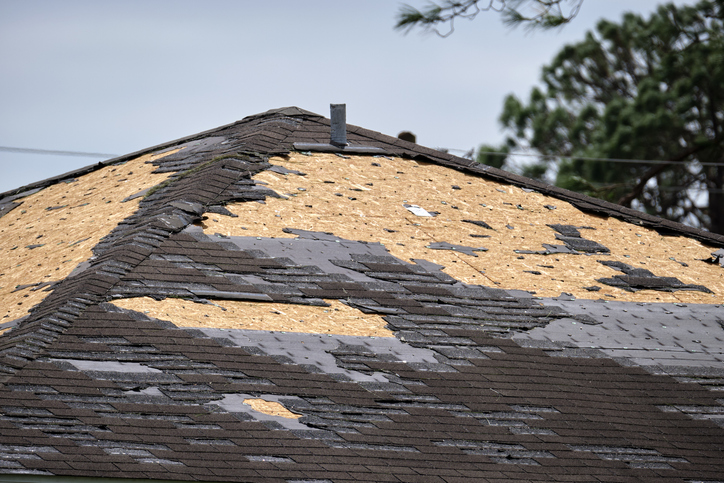
How Wind Damage Leads to Roof Leaks
Once wind has caused damage to your roof, the potential for leaks increases significantly. Understanding the connection between wind damage and roof leaks can help you take action before water intrusion becomes a major issue.
Shingle Damage and Water Intrusion
When wind lifts or removes shingles, it exposes the underlying roof deck to the elements. This exposure allows water to seep in, especially during subsequent rainstorms. Even if the shingles aren’t completely torn off, lifted shingles can break the seal that prevents water from penetrating beneath them.
Flashing Damage and Roof Penetration
Flashing is a critical component in protecting areas of the roof where the surface is interrupted, such as around chimneys, vents, and skylights. When wind damages or dislodges flashing, it creates openings for water to enter. These penetrations are often the starting point for leaks that can spread throughout the roof structure.
Impact of Wind-Driven Debris
Wind-driven debris, such as branches or loose objects, can cause punctures or tears in the roofing material. While these might seem like minor issues at first, over time, they can expand and lead to significant leaks. The cumulative effect of small damages, like tiny punctures, can allow water to infiltrate the roof’s protective layers, leading to widespread damage.
Preventative Measures for Homeowners
Preventing wind damage is always better than dealing with the consequences. By taking proactive steps, homeowners can protect their roofs from the effects of strong winds.
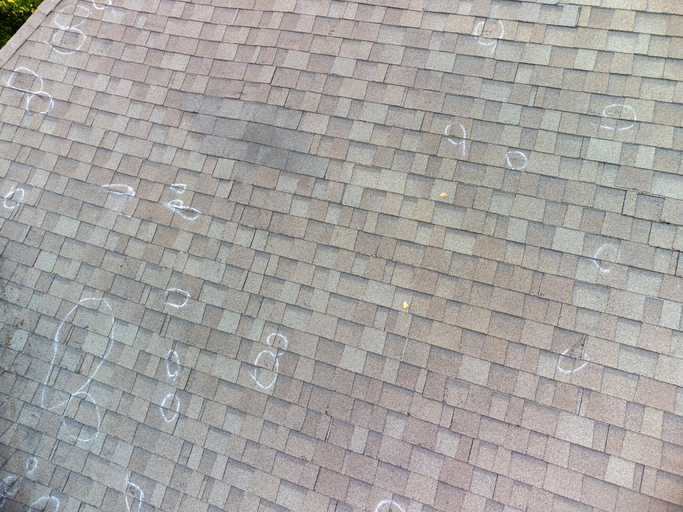
Regular Roof Inspections
One of the most effective ways to prevent wind-related roof leaks is through regular roof inspections, particularly after a storm. During an inspection, look for obvious signs of damage, like missing shingles or bent flashing. Identifying these issues early can save you from costly roof repairs later on.
Strengthening Your Roof Against Wind Damage
Consider upgrading to wind-resistant shingles, which are designed to withstand higher wind speeds. Additionally, securing the roof edges and flashing with extra fasteners can help protect against wind uplift.
Wind Ratings for Shingles
Shingles come with specific wind ratings, indicating the maximum wind speed they can withstand without being damaged. When choosing shingles, it’s important to consider the typical wind conditions in your area. Upgrading to quality shingles with a higher wind rating can provide added protection against wind-related damage.
Maintaining Roof Ventilation
Proper roof ventilation is often overlooked, but it plays a crucial role in reducing the risk of wind damage. Well-ventilated roofs are less likely to suffer from problems like shingle lift. Regularly check and maintain vents and exhausts to ensure they are functioning properly.
What to Do If You Suspect Wind Damage
If you believe your roof has been damaged by wind, it’s important to act quickly to prevent further issues.
Immediate Steps to Take
Start by conducting a visual inspection of your roof from the ground. Look for any obvious signs of damage, such as missing shingles or displaced flashing. Inside your home, check for leaks, particularly in the attic or near exterior walls.
Contacting a Professional
For a thorough assessment, it’s best to contact a professional roofing contractor. They can perform a detailed inspection and identify any hidden damage that could lead to leaks. A professional can also recommend the best course of action to repair the damage and prevent future issues.
Working with Insurance for Wind Damage and Leaks
When wind damage leads to roof leaks, dealing with insurance can be a complex process. Understanding your coverage and the steps to take after damage occurs can help ensure you get the repairs you need.
Contact your insurance provider to understand what is covered under your policy. Document any damage with photos and keep records of any repairs or inspections. This can make the claims process smoother and ensure you receive the appropriate compensation.
Make Sure Your Roof is Protected
Wind damage is a significant threat to the integrity of your roof, and it often leads to roof leaks if not addressed promptly. By understanding the connection between wind damage and leaks, regularly inspecting your roof, and taking preventative measures, you can protect your home from costly repairs. Remember, when in doubt, always consult with a professional to assess any damage and ensure your roof remains in top condition.
